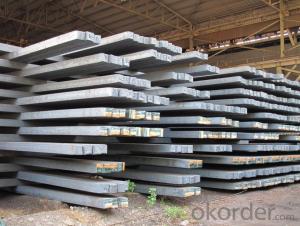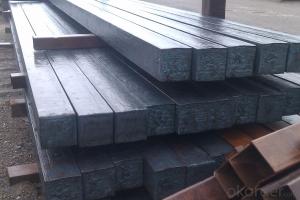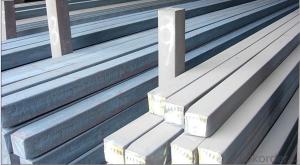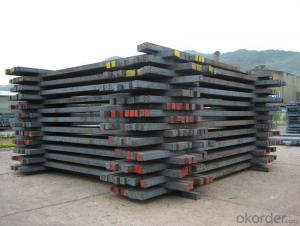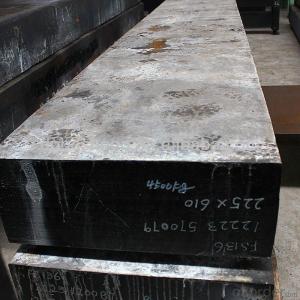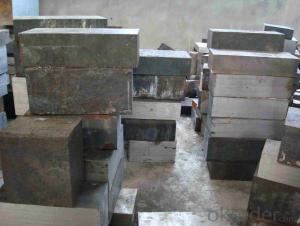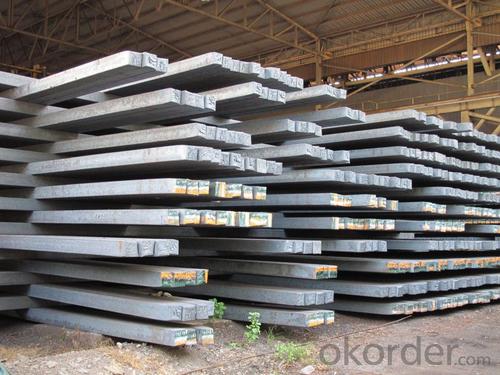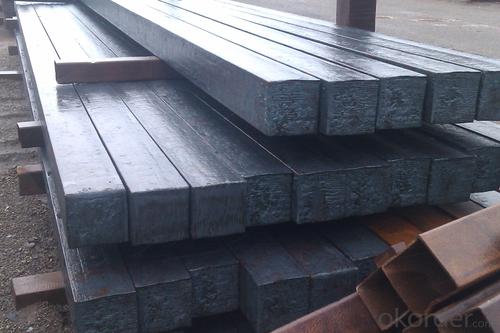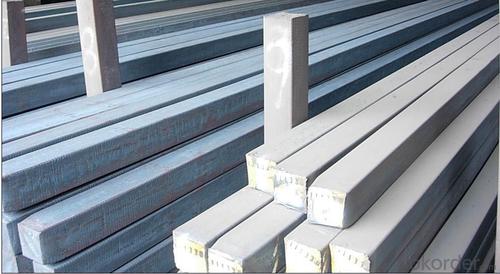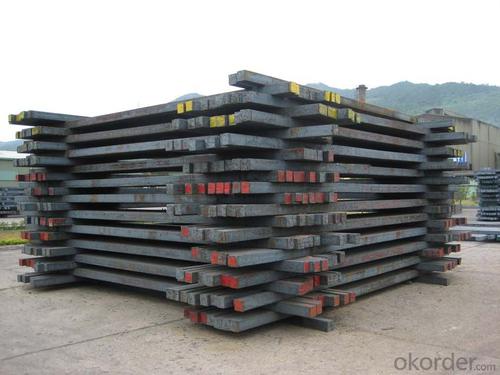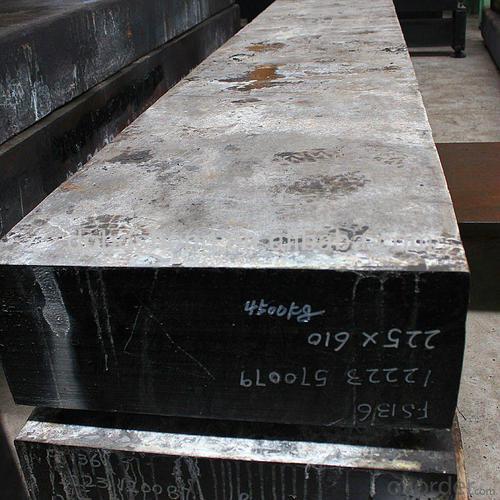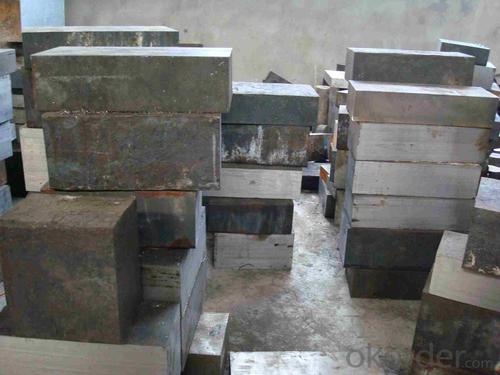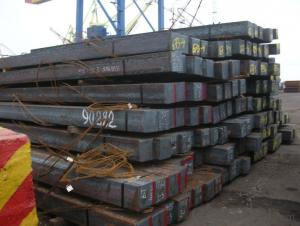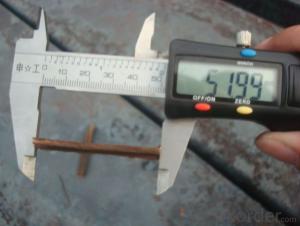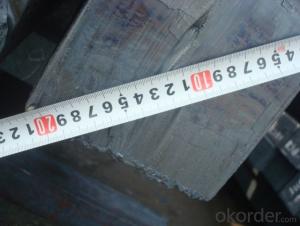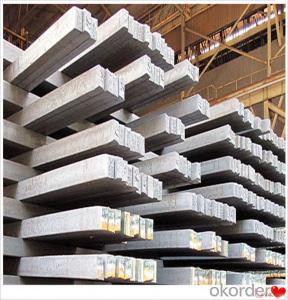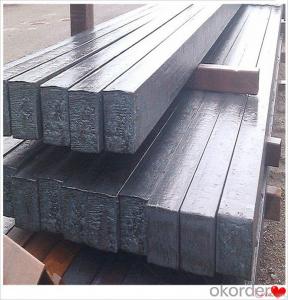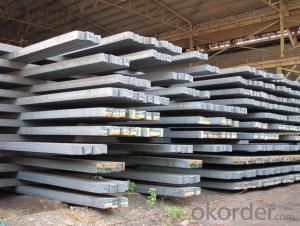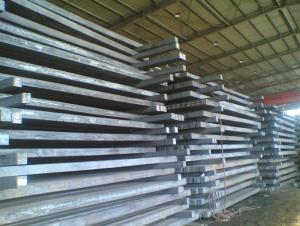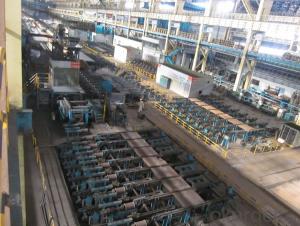Prime quality square alloy steel billet 125mm Q235
- Loading Port:
- Tianjin
- Payment Terms:
- TT OR LC
- Min Order Qty:
- 100 m.t.
- Supply Capability:
- 10000 m.t./month
OKorder Service Pledge
OKorder Financial Service
You Might Also Like
Structure of Prime quality square alloy steel billet 125mm Q235
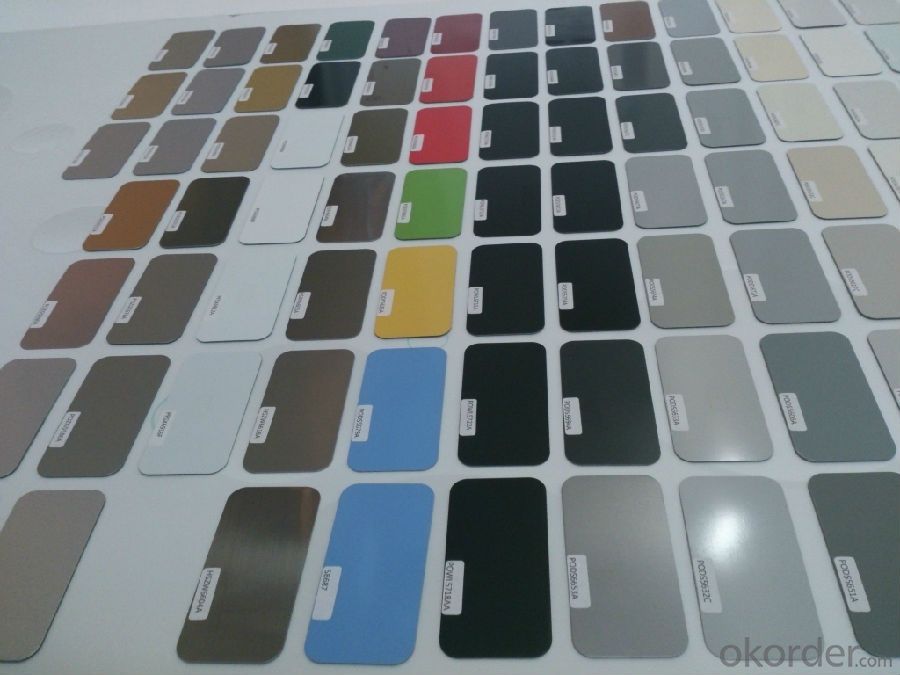
Description of Prime quality square alloy steel billet 125mm Q235
1. Prepainted steel coil is coated with organic layer, which provides higher anti-corrosion property and a longer lifespan than that of galvanized or galvalume steel sheets.
2. The base metals for prepainted steel coil consist of cold rolled, HDGI Steel, electro-galvanized and hot-dip alu-zinc coated steel. The finish coats of prepainted steel coil can be classified into groups as follows: polyester, silicon modified polyesters, polyvinylidene fluoride, high-durability polyester, etc.
3. The production process has evolved from one-coating-and-one-baking to double-coating-and-double-baking, and even three-coating-and-three-baking.
4. The color of the prepainted steel coil has a very wide selection, like orange, cream-colored, dark sky blue, sea blue, bright red, brick red, ivory white, porcelain blue, etc.
5. The prepainted steel coils can also be classified into groups by their surface textures, namely regular prepainted sheets, embossed sheets and printed sheets.
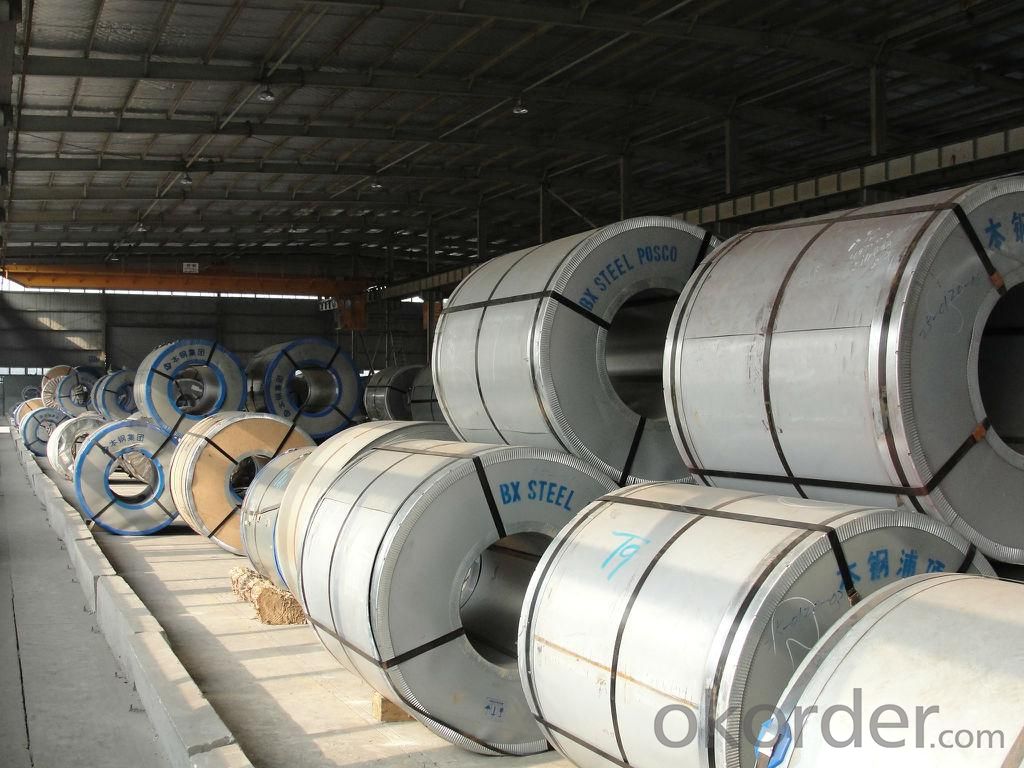
Main Feature of Prime quality square alloy steel billet 125mm Q235
Uncoated CR steel sheet
With the features of in line with the international highest standards in demension and shape, excellent surface finish and properties, the products are mainly used in home appliance and automobile industries.
Galvanized steel sheet(include HDG and EG)
With the features of good corrosion resistance, the products are mainly used in automobile, home appliance, electronics, building and machinery manufacture industries, etc.
Precoated steel sheet
With the features of enviromental protection and good processablility, long lasting surface durability, rich in colors, the products are maily used in building, home appliance and furniture industries, etc.
Applications of Prime quality square alloy steel billet 125mm Q235
Construction
Manufacture anticorrosion, industrial and civil architecture roof boarding, roof grille
Light industries
Home appliance's case, civil chimney, kitchen utensils
Auto industry
Corrosion resistant parts of cars
Agriculture
Food storage, meat and aquatic products' freezing and processing equipment
Commerce
Equipments to store and transport materials, and packing implements
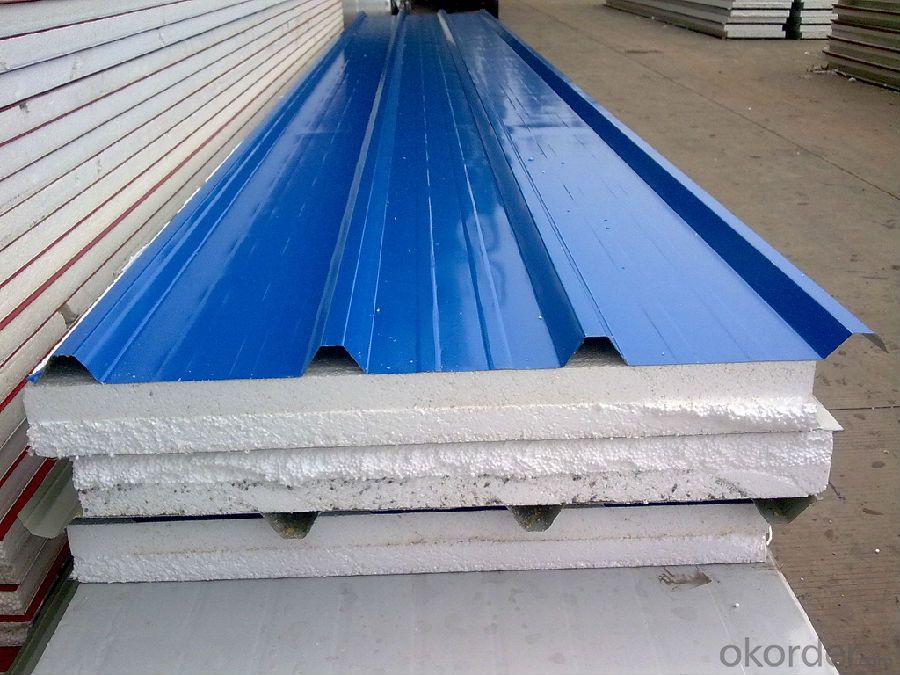
Specifications of Prime quality square alloy steel billet 125mm Q235
Product | Prime quality square alloy steel billet 125mm Q235 |
Material Grade | SGCC / SGCH / DX51D+AZ, etc |
Thickness | 0.6-3.0mm |
Width | 500-1500mm |
Tolerance | Thickness: +/-0.02mm , Width:+/-2mm |
Zinc-coating | Z30-150g/m2 |
Technique | Raw material: Hot rolled steel coil --> Cold rolled_>hot dipped galvalume |
Surface | Dried, Chromated, Unoiled |
Spangle | Regular spangle , small spangle, zero spangle |
ID | 508MM 610MM |
Coil weight | 1-25MT |
Export package | Cardboard inner sleeves, Waterproof paper, galvanized steel covered and steel strip packed |
FAQ of Prime quality square alloy steel billet 125mm Q235
We have organized several common questions for our clients,may help you sincerely:
1. How Can I Visit There?
Our company is located in Tianjin City, China, near Beijing. You can fly to Tianjin Airport Directly. All our clients, from home or aboard, are warmly welcome to visit us!
2. How Can I Get Some Sample?
We are honored to offer you sample.
3. Why choose CNBM?
Our delivery time about 15-20days for standard sizes, if you have other requirements like hardness, quanity and width ,it is about 20-40days. But don't worry we also try our best for the delivery time ,because time longer and our cost is higher.
- Q: Can steel billets be used for making sculptures?
- Certainly, sculptures can be made using steel billets. Steel, being a highly versatile material, offers numerous advantages for sculpting. Its robustness and durability make it ideal for crafting large-scale sculptures that can withstand the elements outdoors. Manipulating and shaping steel billets into various forms is a simple task, enabling artists to unleash their creativity and give life to their concepts. Moreover, steel can be welded, polished, and painted, providing additional avenues for customization and artistic expression. In essence, steel billets provide sculptors with a sturdy and adaptable medium to fashion distinctive and enduring sculptures.
- Q: How are steel billets used in the production of automotive components?
- Steel billets are a crucial raw material used in the production of automotive components. In the manufacturing process, steel billets are heated and then forged or rolled into various shapes and sizes to create the desired automotive parts. These billets serve as a starting point for the production of components such as engine blocks, crankshafts, connecting rods, axles, and suspension parts. The high strength and durability of steel make it an ideal material for these critical components, ensuring the safety and performance of automobiles. Once heated, the steel billets are subjected to various shaping processes, such as hot forging or hot rolling. Hot forging involves applying pressure to the heated billet using a die to create the desired shape. This process not only gives the component its final shape but also improves its mechanical properties by aligning the steel's grain structure. Hot rolling, on the other hand, involves passing the heated billet through a series of rolling mills to gradually reduce its thickness and shape it into a specific profile. This process is commonly used for producing long automotive components like axles or suspension parts. After the shaping process, the automotive components undergo additional manufacturing steps like heat treatment, machining, and surface finishing to enhance their strength, precision, and aesthetic appeal. Steel billets offer several advantages in automotive component production. Their excellent mechanical properties, including high strength, toughness, and wear resistance, make them ideal for withstanding the demanding conditions and loads experienced by automotive parts. Additionally, steel's ability to be easily shaped and formed allows manufacturers to create complex and intricate designs, ensuring optimal functionality and performance. In conclusion, steel billets play a vital role in the production of automotive components by providing the raw material that is shaped and formed into various critical parts. The strength, durability, and versatility of steel make it an essential material for ensuring the safety, reliability, and performance of automobiles.
- Q: How are steel billets used in the production of rebar?
- Steel billets are used as the primary raw material in the production of rebar. These billets are heated and then passed through a series of rollers to shape them into long, thin rods. The resulting rebar is widely used in construction and infrastructure projects to reinforce concrete structures and provide added strength and durability.
- Q: How do steel billets contribute to the manufacturing of kitchen appliances?
- Kitchen appliances rely on steel billets as an essential component for their production. These semi-finished steel products, typically rectangular or square in shape, are created through continuous casting. One way in which steel billets contribute to the manufacturing of kitchen appliances is by serving as the primary raw material for various appliance components. Stoves, ovens, refrigerators, and dishwashers require a strong and durable structure, which steel billets provide. Through processes like hot rolling, forging, or extrusion, the billets are transformed into specific parts such as frames, doors, panels, and handles. Steel billets also play a vital role in ensuring the longevity and reliability of kitchen appliances. With its high tensile strength and resistance to corrosion, steel allows manufacturers to create appliances that can withstand daily use and endure for a long time. By using steel billets as the base material, kitchen appliances can handle high temperatures, heavy loads, and harsh environments without compromising their structural integrity. Moreover, steel billets contribute to the aesthetic appeal of kitchen appliances. The smooth and polished surface of steel provides an attractive and modern finish, making appliances visually appealing to consumers. Steel can also be easily manipulated to achieve different shapes and designs, allowing manufacturers to create sleek and stylish appliances that complement the overall kitchen decor. Additionally, steel billets possess excellent heat conductivity properties, which is crucial for kitchen appliances like stoves and ovens. The even distribution of heat throughout the appliance ensures efficient cooking and baking, guaranteeing that food is cooked thoroughly and evenly. In conclusion, steel billets are indispensable in the manufacturing of kitchen appliances due to their strength, durability, aesthetics, and heat conductivity properties. Without these billets, it would be challenging to produce high-quality, reliable, and visually appealing kitchen appliances that meet consumer demands.
- Q: What are the causes of internal cracks in continuous casting billet?
- The test according to the process of the sample for cooling, in order to study the effects of the three elements of the internal crack of continuous casting billet hot.
- Q: How are steel billets used in the production of shipbuilding components?
- Steel billets are commonly used in the production of shipbuilding components as a starting material. These billets are heated and then forged or rolled into various shapes and sizes, such as plates, beams, or angles, which are essential for constructing the structural framework of ships. The versatility and strength of steel billets make them ideal for withstanding the demanding conditions at sea, ensuring the durability and safety of shipbuilding components.
- Q: How do steel billets contribute to the manufacturing of renewable energy equipment?
- Steel billets are an essential component in the manufacturing of renewable energy equipment, such as wind turbines and solar panels. These billets are used to create sturdy and durable structures, including tower bases for wind turbines and frames for solar panels. Additionally, steel billets are crucial in the production of transmission and distribution infrastructure required for renewable energy systems. Their strength and versatility make them an indispensable material in the renewable energy industry, enabling the efficient and reliable generation of green energy.
- Q: How do steel billets contribute to the manufacturing of industrial equipment?
- The production of industrial equipment heavily relies on steel billets, which are essential for the manufacturing process. These semi-finished steel products are created through casting and act as the raw material for a wide range of industrial equipment. A key aspect of steel billets is their versatility, which greatly contributes to the manufacturing of industrial equipment. They possess both malleability and strength, allowing them to be easily shaped and molded into various forms, such as bars, rods, or sheets. This adaptability enables manufacturers to produce durable and reliable components and structures capable of withstanding heavy loads and extreme conditions. Furthermore, steel billets offer an impressive strength-to-weight ratio, making them particularly suitable for applications where reducing weight is crucial without compromising structural integrity. This quality proves beneficial for industrial equipment that requires frequent transportation or movement, as the use of lightweight steel billets optimizes efficiency and minimizes energy consumption. Additionally, steel billets play a significant role in protecting industrial equipment against corrosion and wear. Many industrial environments expose equipment to harsh conditions, including moisture, chemicals, and abrasion. The utilization of steel billets ensures that the equipment remains resistant to these challenges, reducing maintenance and replacement costs while maintaining performance over time. Moreover, steel billets facilitate efficient heat treatment processes during the manufacturing of industrial equipment. Through controlled heating and cooling procedures, manufacturers can enhance the mechanical properties of the steel, such as hardness, toughness, and ductility. This enables the production of equipment capable of withstanding high temperatures, extreme pressures, and dynamic loading conditions, ensuring safety and reliability across various industrial applications. In conclusion, the role of steel billets in the manufacturing of industrial equipment is indispensable. Their versatility, strength-to-weight ratio, corrosion resistance, and facilitation of heat treatment processes contribute to the creation of durable, reliable, and high-performance equipment capable of meeting the demands of diverse industries.
- Q: How are steel billets used in the manufacturing of electrical equipment?
- Steel billets are often used as the raw material in the manufacturing of electrical equipment. They are typically melted and formed into specific shapes, such as coils or laminations, to create various components of electrical machinery. The high strength and durability of steel make it suitable for withstanding the demands of electrical equipment, ensuring reliable operation and long-term performance.
- Q: How are steel billets used in the shipbuilding industry?
- Steel billets are an integral component in the shipbuilding industry, primarily used for the construction of various parts and structures of ships. These billets serve as the raw material for manufacturing essential components such as hulls, frames, bulkheads, and other structural elements. Shipbuilding requires steel with exceptional strength, durability, and corrosion resistance, making steel billets an ideal choice due to their high-quality composition and properties. The billets are first shaped and formed into the desired dimensions, which can vary depending on the specific requirements of the ship's design. Once the steel billets are prepared, they are then used in various shipbuilding processes. One of the key applications is in the construction of the ship's hull, which is the external structure that provides the necessary strength and buoyancy. Steel billets are cut and welded together to form the hull's framework, ensuring the ship's structural integrity and stability. Additionally, steel billets are employed in manufacturing frames, bulkheads, and decks. Frames provide the structural support and rigidity to the ship's framework, while bulkheads divide the ship's internal space into separate compartments, enhancing safety and preventing water ingress in case of any damage. Decks, on the other hand, serve as the floors of different levels within the ship. Moreover, steel billets are used in the fabrication of various equipment and machinery installed on the ship. These include propulsion systems, cranes, winches, and other heavy-duty components that contribute to the ship's functionality and operational capabilities. Overall, steel billets play a crucial role in the shipbuilding industry as they form the foundation for constructing ships and their essential components. The high-quality steel and its versatility allow shipbuilders to create vessels that meet stringent safety standards, withstand harsh marine conditions, and ensure the longevity of the ships throughout their service life.
Send your message to us
Prime quality square alloy steel billet 125mm Q235
- Loading Port:
- Tianjin
- Payment Terms:
- TT OR LC
- Min Order Qty:
- 100 m.t.
- Supply Capability:
- 10000 m.t./month
OKorder Service Pledge
OKorder Financial Service
Similar products
Hot products
Hot Searches
Related keywords
